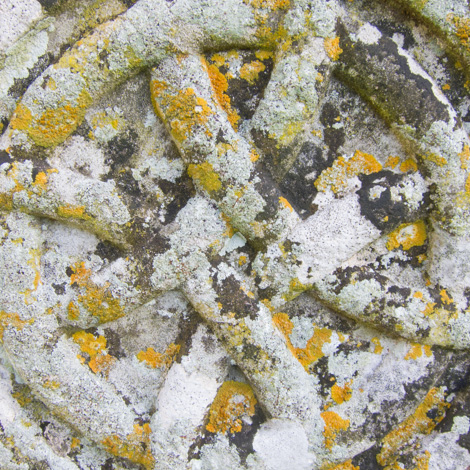Did you know that lichens are included in many high end perfumes? They harvest 25 tonnes of a particular lichen each year in Macedonia, transport it to Germany to distill the oils and then add it to the perfume. Apparently it makes the scent stick to the skin for longer, a desirable property in an expensive bottle of smells.
What about dyes – the original Harris tweed was dyed using lichens. But, they can also give more interesting hues – especially if you wee on them to fix the colours in the fibres.
Or, throat pastilles? Because lichens usually live for so long they have developed some unusual chemicals to combat attackers so researchers are investigating their antibacterial properties for potential medicinal uses.
They have a downside too. They absorb nutrients and anything else in the atmosphere – including radioactive elements and heavy metals. When they are used as a foodstuff this can have disastrous consequences. The Sami reindeer herders have the highest incidence of throat cancer in the world – they eat the reindeer that eats the lichen that absorbed radioactive elements after the Chernobyl disaster.
Sadly we have killed off many of their lichens, as a result they have now found a use in pollution monitoring. In the 1970s anxiety was rife (amongst lichenologist at any rate) that we would lose many lichen species as they couldn’t survive the acid rain – indeed in some places old trees still don’t have any lichens on their lower trunk or branches. Then there was a worry that the lichens that specialise in high nitrogen environments (so love the pollution of diesel cars) would take over and crowd out the other lichens. Fortunately this has not come to pass and we have over 2,000 species of lichen in this country (compare this to the 1,800 species of flowering plant).
I learnt all this and much more in one hour listening to Ivan Pedley of the British Lichen Society talking about lichens in churchyards.
For those that may not know, a lichen is a symbiosis of an algae (or occasionally a cyanobacteria) and a fungus. The algae does the photosynthesising and the fungus provides the nutrients from the atmosphere and protects the algae from dehydration. They grow quite slowly and some are more susceptible to pollution than others. It was proved that the Rollright stones (ancient monument in Oxfordshire) were vandalised by the Victorians – some of the stones had the wrong lichens and so were probably imported to make the circle look good, and others had been lifted from a horizontal position – the lichens were 400 years old (estimated from the size) on one side and just 150 years old on the other!
Apart from showcasing the variety and beauty of lichens – some small stone ornaments had tens of species of lichen on them – the main point of the talk was to illustrate how easy it is to lose some of these ecosystems (home to may little bugs). Churchyards are particularly important in this country for lichens; the species present will vary from region to region because of the type of stone. But all too often lichens are lost when gravestones are scrubbed or put in the shade or stood against a wall – lichens need sunlight for photosynthesis. If they were birds or mammals, or possibly even insects, there would be an outcry if we went round just scrubbing them out, but we regularly do that to lichens – and some in Northamptonshire are quite rare, specialising on our ironstone. So the take home message of the evening was – don’t clean your garden ornaments or gravestones, rebuild your dry stone walls, replace your fence posts or even clean your car (Ivan was proud of the five species on his four year old Ford). You might have 20 or 30 species of lichen on there!
